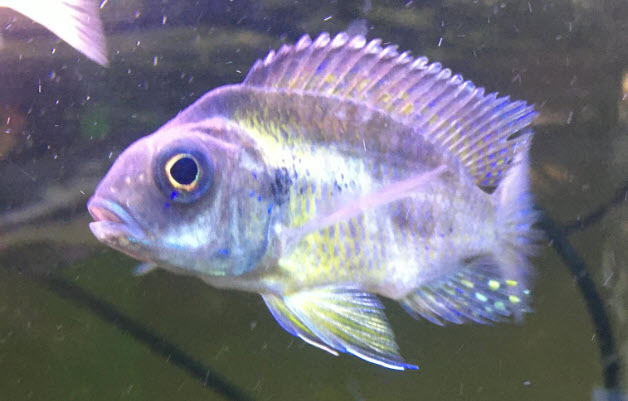
Fish tuberculosis or fish TB (also more properly called Environmental Mycobacteriosis or EM) is a bacterial disease which is different. There is no effective medication available to the hobbyist for fish TB. This sets it apart from the other bacterial diseases. It is also unusual in that it is the only fish disease which humans can get.
Note that scientists prefer the term “non-tuberculosis mycobacteriosis” or “environmental mycobacteriosis” and emphatically say one should never call this disease tuberculosis or TB. But fish TB is the name everyone recognizes for this disease so that is what we will use.
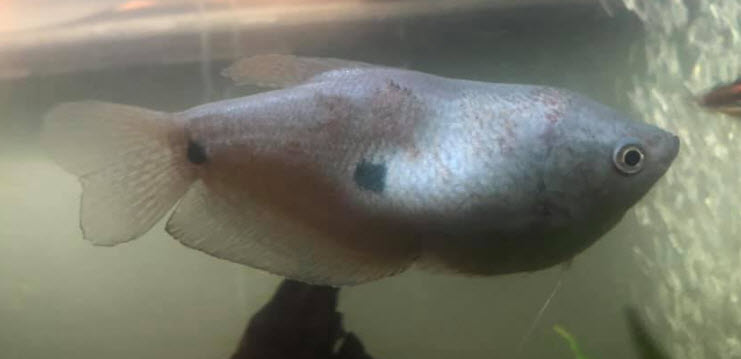
Fish TB (environmental mycobacteriosis) can typically be found in the majority of the aquariums in the hobby. Fish commonly have the disease and either exhibit no symptoms or have very difficult to see symptoms. Often the fish just do not grow as fast as they should or they just have a slight hollow to the belly. It is a very slow moving disease. And many fish get the disease and then recover completely.
.
Fish TB is NOT a Death Sentence Either for a Fish or for an Aquarium
.
Diana Walstad (an incredibly knowledgeable scientist and author of “Ecology of the Planted Aquarium”, a book which is must reading for any serious planted tank hobbyist) has described fish TB as “the most prevalent disease in the aquarium hobby” (“Fish TB”, Diana Walstad, Tropical Fish Magazine, June 2007 issue, pp. 36-41).
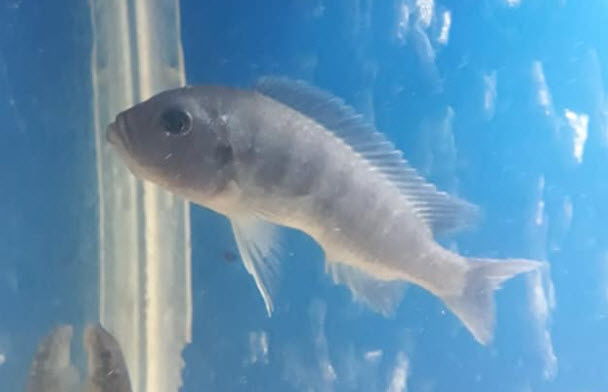
Symptoms of Fish TB (Mycobacteriosis)
Fish TB (Mycobacteriosis) is a slow onset internal bacterial disease commonly referred to as “wasting disease”. It causes emaciation in fish and “hollow belly”. The head looks too big for the body in many fish with it. In some fish it causes a wasting of flesh and muscle tissues in the top half of the body, leading to a knife-backed or “razorback” appearance. A hollow in the forehead directly above the eyes is common in fish TB.
Skin ulcers are also common. The skin ulcers associated with fish TB are different than bacterial skin ulcers. They come on slowly, over a period of weeks or months. The ulcers start out typically as a lump on the fish. This is called a “tubercle”, from tuberculosis. The center of the lump then erodes and becomes an open wound with a raised edge.
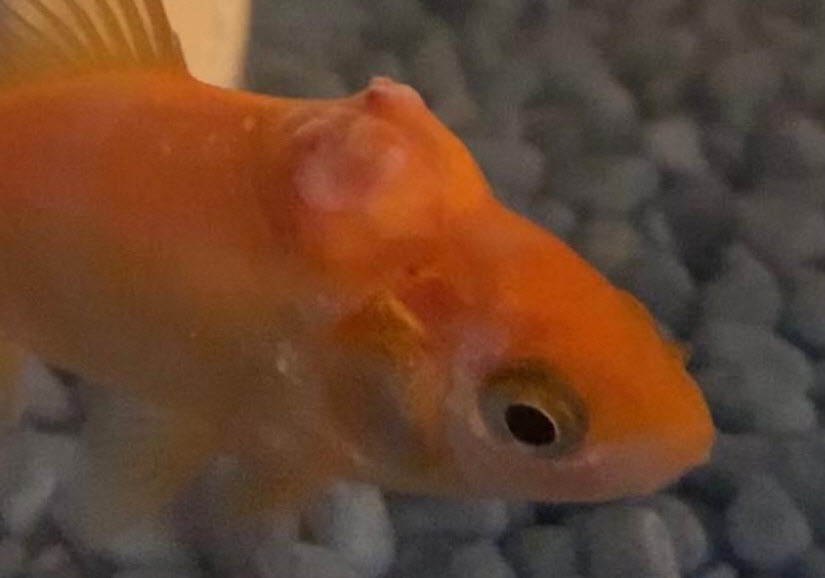
Spinal deformities often occur, with arched backs common. Also common is faded color, loss of appetite and lethargy. Less common symptoms include bulging, exophthalmic eyes, dropsy, bloat, mouth sores, swimming irregularities and twirling.
Sometimes one will just have many unexplained deaths. If fish which die for no apparent reason are examined by professional pathologists, they find large amounts of mycobacterium in most of those fish. If a lot of fish die over a span of weeks or months in a steady stream, it may be fish TB. But note that fish TB is treated the same as many other diseases, namely just clean up the water. So one doesn’t need to diagnosis fish TB to treat many deaths over a span of time in a fish tank. Just clean up the water.
Because the mycobacterium invades all the organs in a fish’s body, including the skin, the symptoms of fish TB can mimic many other diseases and are often difficult to pin down. The one common thread is that they occur SLOWLY in most cases. An ulcer which slowly erupts over a span of weeks is probably fish TB. An ulcer which erupts in two days is probably gram-negative bacteria (columnaris, aeromonas, etc.) bacteria.
This mimicking is very confusing. Dropsy, twirling, swim bladder disease, bloat, hole-in-the-head, tumors, ulcers, pop-eye, hemorrhagic septicemia, red spot, etc. all can be produced by fish TB.
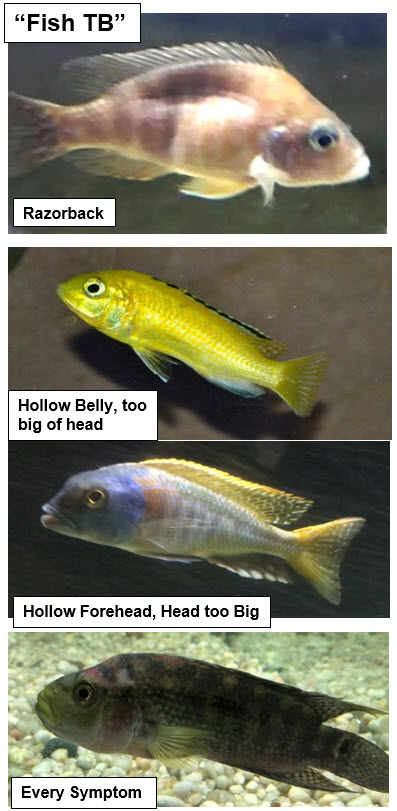
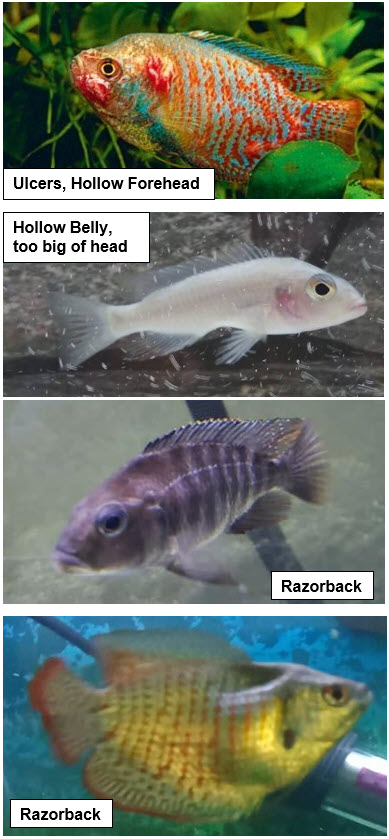
Treating Mycobacteriosis
If one APPEARS to have fish with fish TB, the best treatment is to:
- add copious amounts of biological filtration that isn’t thoroughly cleaned ever. Large canisters filled with foam or pot scrubbers, sumps and under-gravel filters are the best treatment for fish TB.
- Add a lot of aeration with either ‘choppy waves” at the water surface or a lot of bubbles from a decent sized air pump
- Feed fish lightly. Feed them a maximum of one eye volume once per day. Fish are coldblooded creatures that do best with feeding only 1% to 2% of their body weight per day. That is not a lot of food.
- Adding a UV sterilizer can also help reverse a plague of fish TB.
Dr. Loh reversed several cases of fish TB by adding a lot of biofiltration area (think an under-gravel filter, a canister filled with a good media like foam, pot scrubbers or static K1 Media, and/or a sump filter filed with K1, foam and/or pot scrubbers). Diana Walstad reversed it by adding a UV sterilization unit. Both these courses of action reduce the bacterial count in the water column. By reducing the bacteria count in the water column the fish are able to better utilize their own immune systems to fight off the infection.
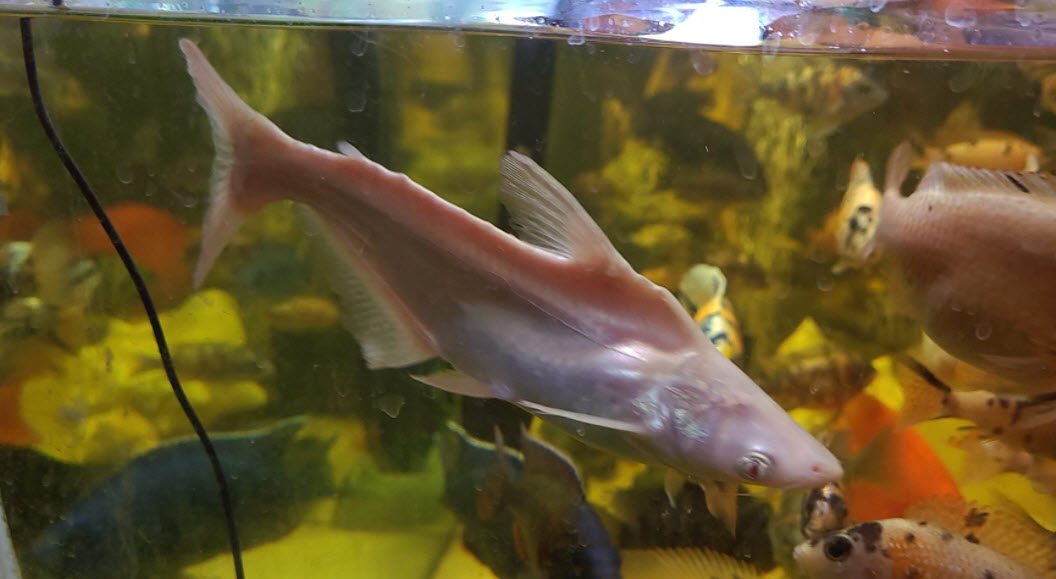
It is common for a fish keeper with a fish with “wasting disease” to think that the fish aren’t getting enough food. So they feed more. Then, when nothing happens, they feed even more. This is exactly the wrong thing to do and will only make the progression of the TB faster. Excess food in the water creates bacteria in the water and cuts down on the immune system resources available to the fish.
A comment made on this website is appropriate here:
“I started keeping fish one year ago today. I bumbled my way through that first year like most folks do including dumping over a hundred dollars into every antibiotic under the sun to treat a chronic sickness in my first tank. Stumbled upon the mycobacteriosis article and it word for word described both what i observed in my fish over the course of 3 months and the conditions in my tank (heavily planted, overfed, low pH, low oxygenation). Put in a UV sterilizer, reduced feeding and adjusted the airstone/pump and what do you know, 10 days later everyone’s swimming around like they used to (minus a few permanent deformities, sorry guys).”
Note that fish TB is pretty ubiquitous in the aquarium and can’t be “sterilized” out of action. University researchers have spend millions trying to do that and failed.
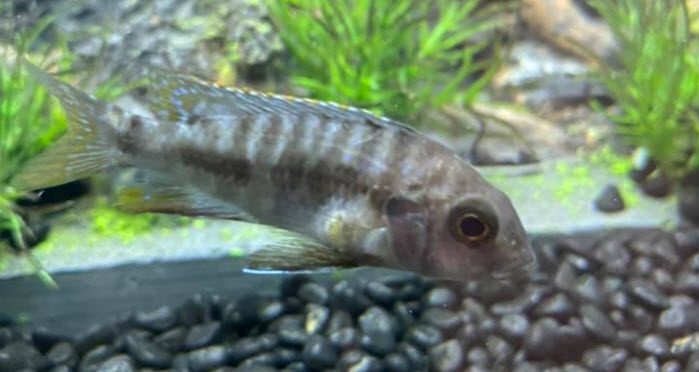
How to Treat EM if One has Huge Amounts of Filtration and Aeration
I have probably 500 fish in sixteen aquariums throughout my home. ALL of these fish have huge amounts of over filtration. I probably have more effective surface area per pound of fish than any other amateur in the world (public aquariums use sand and bead filters that I can’t compete with). I have crystal clear water in all my tanks and amazingly healthy fish. But I still have the occasional fish pop up with what APPEARS to be fish TB (EM). They have a hollow belly, an oversize head and/or slight thinning on the back.
These fish probably have fish TB 50% to 80% of the time. The diagnosis is NOT easy! So what do I do with such fish? IF and ONLY IF the fish has an obvious problem (I do not like to have sickly looking fish in my aquariums. Just me, anyone is free to take a different approach!) I isolate them in a quarantine tank. I then do a shot gun approach in case it isn’t fish TB. I use the medicated food I have in my freezer (metronidazole, Maracyn 2, and fenbendazole in food) to feed the fish (medicated food once per week). I keep them on that regimen for two months. If they haven’t improved I then euthanize them. Just what I do.
Mycobacteriosis in Humans
All home hobbyists should be aware that this disease can infect humans. For more on this human disease go to this link:
10.4.2. Mycobacteriosis in Humans
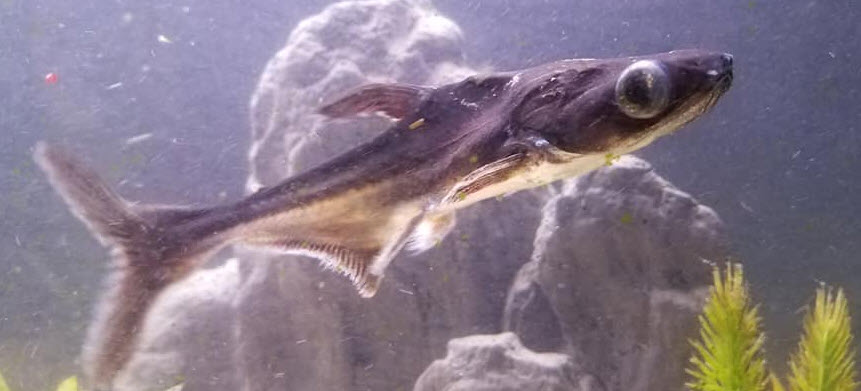
Fish TB
For those interested in going into more depth on fish TB, clicking on the following link will be useful:
10.4.1. Fish TB in Depth
.
Return to Diseases Menu
.
Aquarium Science Website
The chapters shown below or on the right side in maroon lead to close to 400 articles on all aspects of keeping a freshwater aquarium. These articles have NO links to profit making sites and are thus unbiased in their recommendations, unlike all the for-profit sites you will find with Google. Bookmark and browse!
.

Dave says
In reply to anonymous ….. Water changes will have no impact at all on fish TB. UV and lots of filtration will both have significant positive effects.
Anonymous says
For fish tb, will large water changes make a significant impact assuming the other measures are also taken?
Dave says
In reply to Kelsey ….. You have nitrite because you are only halfway into your cycle. Just very lightly feed your fish for a few weeks and do no water changes and you should be just fine. One part nitrite is no problem at 8.0 pH. Read this article for more on fish in cycling: http://aquariumscience.org/index.php/2-5-aquarium-fish-in-cycling/
Kelsey says
Hello,
I’m pretty new to this fish keeping world, I have one fancy fish and a comet that both seem to be doing wonderful. I have had the tank up for about a month now, my filter is nice and brown, my glass keeps getting covered in brown gunk (is this good?). I was just hoping if someone could tell me if 8.0 ph, 0 ppm Ammonia, 1.0 ppm Nitrite (I just did a 50% water change and still the same if not worse) and 20 ppm Nitrate is good? I’m more concerned about that Nitrite, just hoping if someone has some tips on how to lower that.
Thank you!
Dave says
In reply to Jo ….. Methylene blue has no effect what-so-ever on tuberculosis. NO EFFECT!
Jo says
Methylene blue works.
Dave says
In reply to Alyssa ….. Live foods won’t absorb medication. Since the fish will only eat live foods it needs to be treated as though it isn’t eating at all. It needs to be treated with what is basically a shotgun approach with multiple medications. Treatment is difficult and typically involves pipetting or shallow baths. More about it can be found at the following article: http://aquariumscience.org/index.php/11-15-fish-not-eating/
Alyssa says
Hello, I have a pea puffer with a sunken belly that holds its mouth open wide all of the time and is breathing more rapidly than normal.
It is behaving and eating normally.
Based on the sunken belly I was thinking TB but the open mouth doesn’t seem to be a symptom listed for and common disease.
I have him in a 3g quarantine tank with heater and air stone.
Will live food such as black worms absorb medication? It will only eat live food.
Thank you,
Alyssa
Jazz says
I have a Betta that just passed away from what may have been TB (there’s no place for me to send for pathology here to confirm) as she didn’t respond to any medication (kanaplex, salt, minocycline, antiparasitic) and continued to decline (mostly anorexia and what appeared as vague fungal infections). Do I have to scrap everything in the tank (she was the only resident besides pest snails and detritus bugs) and every piece of equipment I used for the tank? Can I bury her in a large plant potter with a citronella plant or do I need to dispose of her some other way? Thank you.
Dave says
In reply to Jane ….. Don’t know where you got those numbers. Normally fish TB will be killed by temperatures OVER 180 degrees F and NOT killed by temperatures below freezing. In any case, you cannot eradicate EM from any tank by any means since plants and fish will both have the bacteria on them. So if you do sterilize the tank, the first plant or fish added will reinfect the tank. Even chlorinated tap water will have EM bacteria in it.
Jane Conder says
Ok so it is a naturally occurring pathogen. I have read that it can survive temperatures over 1000 degrees F. I have also read that freezing temperatures can be quite effective in killing bacteria and parasites. We have a walk in freezer. Would freezing the aquarium eradicate the disease?
Dave says
In reply to Ashley …. Before I thoroughly researched it I would have said you were going overboard. But after running the numbers I would say you are right in your precautions. The chance of getting TB might be very small, like one in ten thousand, but it is a nasty disease to get that requires a long treatment with some antibiotics which have some bad side effects. And you definitely would seem to have fish TB in you fish. I wouldn’t bother with sterilizing the gloves though. EM is very difficult to kill with disinfectants.
Ashley says
I have mollies in my tank. Slowly they’ve been dying off 1 by 1 and they didn’t have any physical symptoms except they would hide more and hang out towards the bottom of the tank. However, earlier this week my one Molly got a curved spine (like an “s” shape – sideways not up and down). He eventually couldn’t swim and the day I decided to euthanize him he was “twirling” and get off the bottom of the tank. I now have another molly where her back is curving slightly. I’m so scared about catching this myself that I bought gloves that go higher than my elbows and I bought better cleaning equipment so I don’t have to stick my hands in as far. After I’m done cleaning my tank with those gloves, do I need to sanitize them to get the germs off? Am I going a little overboard or should everyone be this precautionary?
Dave says
In reply to Andriena …. Just let the aquarium sit with the filter running for a month or so and it will be fine for another betta. The TB germ will have been reduced to “nonpathogenic” numbers. The germ that causes fish tuberculosis is found in every aquarium. You cannot get rid of it.
Andreina Grillet says
Hello,
I think that my Betta developed tuberculosis…. I had to euthanize him, the first thing that
happened was a unilateral por eye that healed in a matter of a month, then he developed a big tubercule in his forehead that became bigger in a matter of weeks and on day erupted and left a light pink scar that sometimes loose pieces of skin, also and he began to be more lethargic and without much appetite…he was never the same after that….
It is this aquarium now unusable to another betta? Do I have to discard it?
Thanks in advance for your time and help.